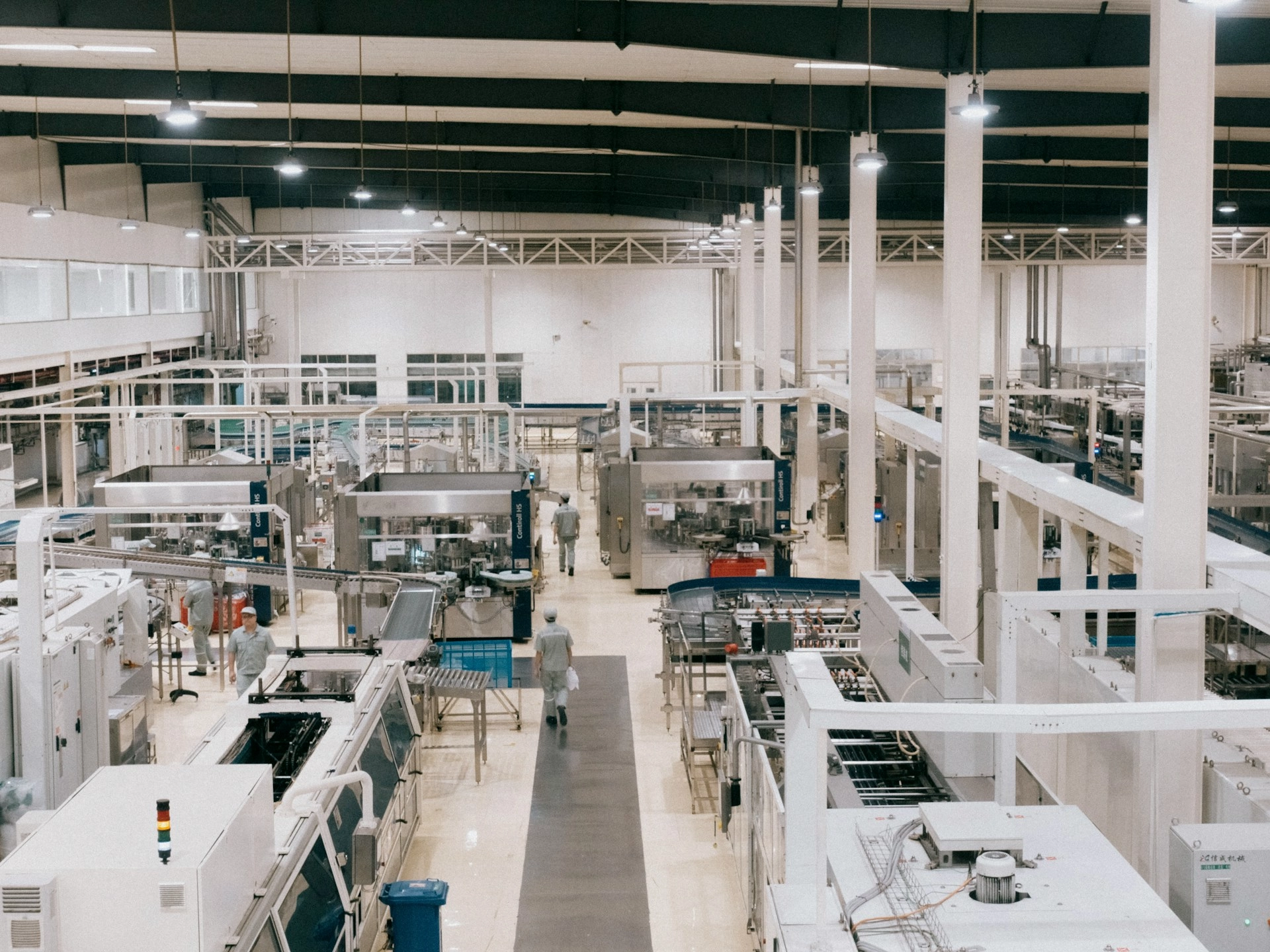In a nutshell:
- Predictive analytics is transforming decision-making in various industries by forecasting outcomes and trends.
- Examples in B2C companies include sales forecasting and conversion prediction.
- In finance, predictive analytics aids in fraud detection, cross-selling, and upselling.
- Marketing benefits from customer segmentation, churn prediction, and personalized campaigns.
- Predictive analytics in manufacturing, HR, retail, and transportation optimizes operations and enhances decision-making.
If you could catch a glimpse of the future, would you seize that opportunity? Well, predictive analytics offers businesses across industries the chance to do just that. By unleashing the power of data and advanced algorithms, this cutting-edge technology provides invaluable foresight, empowering decision-makers to stay ahead of the curve.
From forecasting market trends to anticipating customer preferences, from streamlining supply chains to identifying top talent, predictive analytics is revolutionizing how organizations operate. It's like having a team of fortune-tellers on your payroll, except they don't rely on palm reading or tarot cards – they use cold, hard data and sophisticated modeling techniques to uncover insights that would otherwise remain buried in the depths of information.
In this post, we'll explore real-world examples of predictive analytics from finance, marketing, manufacturing, human resources, retail, and transportation, showcasing how this technology is reshaping the future of business. Who knows? By the end of this adventure, you might even be able to predict the next viral meme sensation (or at least have a better idea of what your customers want before they do).
Predictive Analytics in B2C Companies
The business-to-consumer (B2C) marketplace is a swarm of information and data holding enormous potential for companies ready to tap into it. Predictive analytics can be a game-changer in B2C industries, opening many possibilities from enhancing sales forecasts to predicting conversion rates.
Sales Forecasting
Sales forecasting is one of the most crucial predictive analytics examples in B2C companies. Companies track various consumer behavior metrics—historical sales data, seasonal trends, market developments, and more—to forecast future sales.
Predictive analytics tools can analyze this massive data set and provide accurate sales projections using machine learning algorithms. This allows companies to plan their production, manage their inventory effectively, and avoid over- or under-stocking scenarios.
Conversion Prediction
Conversion prediction is another powerful application of predictive analytics. Through analyzing customer behavior data, including past purchases, website interactions, and social media activity, predictive models can identify the likelihood of a prospective customer converting into a sale.
This information can help firms tailor their marketing strategies, make customer-specific recommendations, and focus more on high-probability prospects. Predictive analytics can also identify patterns in customer drop-offs, providing valuable insights about the pain points in the customer journey and offering actionable suggestions to improve conversion rates.
By understanding and leveraging these predictive analytics examples, B2C companies can improve their efficiency, customer engagement, and ultimately, their bottom line. The information-driven business model is gaining traction, and predictive analytics is the tool that fuels it.
Predictive Analytics in Finance
The financial sector is fraught with risks and uncertainty. Predictive analytics is the perfect solution for these problems. From detecting fraudulent activities to predicting opportunities for cross-selling and up-selling additional products and services, financial institutions, insurance companies, and investment firms use predictive analytics to safeguard their assets and maximize their profits.
Photo by TabTrader on Unsplash
Fraud Detection and Prevention
Financial institutions are particularly susceptible to fraudulent activity, including credit card fraud, identity theft, and money laundering. Predictive analytics can play a crucial role in detecting and preventing such fraud.
By examining past transactions, user behavior, and known fraud patterns, predictive analytics can identify suspicious activity, enabling quick response to potential threats. Thanks to the integration of machine learning algorithms, these systems can continuously learn and adapt to new types of fraud, which improves their detection accuracy over time.
Cross-Sell and Upsell Predictions Offer Customers Additional Products and Services
Cross-selling and upselling are crucial strategies for financial institutions to increase their revenues. Predictive analytics can analyze a customer's transaction history, account behavior, and even social media activity to identify potential products or services they might be interested in.
For example, a customer who frequently travels might be interested in an upgraded credit card with travel benefits. Similarly, a customer with significant deposits may be interested in higher-yielding investment products. If they understand their customers' needs and predicting their interests, financial institutions can cross-sell and upsell effectively, boosting their bottom line and enhancing customer satisfaction.
Predictive analytics provides financial institutions with valuable insights and creates a more proactive approach to decision-making. By harnessing the power of predictive analytics, financial services providers can gain a competitive advantage and reshape their strategies for the future.
Predictive Analytics in Marketing
The field of marketing is undergoing a profound transformation. Today's marketers are expected to deliver personalized experiences on a large scale and measure return on investment accurately. This is where predictive analytics comes in. It allows marketers to segment customers, predict their behavior, and create targeted campaigns to maximize effectiveness.
Customer Segmentation and Targeted Campaigns
Customer segmentation is one of the most critical applications of predictive analytics in marketing. With the help of machine learning algorithms, predictive analytics can group customers based on various factors like demographics, buying behavior, customer preferences, and interaction with marketing campaigns.
Once the segmentation is complete, predictive analytics can help design targeted marketing campaigns. By understanding what drives a particular group of customers, marketers can create personalized messages and marketing materials that resonate with these segments. Predictive analytics can also forecast a campaign's success rate before it's even launched, helping marketers optimize their strategies.
Churn Prediction and Customer Retention
Retaining a customer is often more cost-effective than acquiring a new one, making customer retention a key objective for marketers. Predictive analytics can help improve customer retention rates by predicting churn.
Churn prediction refers to the process of identifying customers who are most likely to stop doing business with a company. By analyzing customer data — including purchase history, interactions with customer service, and responses to marketing campaigns — predictive analytics can identify triggers that lead to customer churn. This gives marketers an early warning so they can take preventive actions. It can be as simple as sending a personalized offer or as complex as changing a product feature.
Predictive analytics demonstrates an important shift towards data-driven marketing strategies. Marketers who leverage predictive analytics can deliver more personalized customer experiences, allocate resources more efficiently, and ultimately drive higher returns for their marketing investments.
Photo by Catgirlmutant on Unsplash
Predictive Analytics in Manufacturing
As the manufacturing industry embraces a digital evolution, predictive analytics emerges as a crucial tool for operational efficiency and effective decision-making. This technology is paving the way for increased productivity and improved profitability in the manufacturing sector, including predictive maintenance and supply chain management.
Predictive Maintenance and Equipment Optimization
One of the most critical examples of predictive analytics in manufacturing is predictive maintenance. Traditionally, manufacturers followed a preventive maintenance schedule where machinery was serviced at regular intervals, whether it was in good or bad condition. However, this strategy often resulted in unnecessary downtime and wasted resources.
Predictive maintenance, driven by predictive analytics, takes a different approach. It analyzes various operational data, including vibration levels, temperature, pressure, and more, to predict when equipment might fail or require maintenance.
This approach enables manufacturers to schedule maintenance just in time, ensuring minimal interruption to the production process and extending the lifespan of the machinery.
Supply Chain Management and Demand Forecasting
Predictive analytics can be a game changer in a globalized world where supply chains are complex and interconnected. It can forecast demand based on a host of factors, such as seasonal trends, market signals, and past sales data. Manufacturers can align their production planning and inventory management with upcoming market demand, reducing excess stock and out-of-stock situations. In the long run, this can dramatically decrease warehousing costs and increase customer satisfaction.
Predictive analytics can also help manufacturers identify potential risks in their supply chain, such as supplier delays or quality issues, by analyzing historical data and trends. Such proactive problem-solving can significantly improve the supply chain's resilience and ensure smooth operations, even in uncertain market conditions.
Predictive Analytics in Human Resources
Predictive analytics is also reshaping the landscape of human resources (HR). By enabling more informed and data-driven decision-making, HR predictive analytics can enhance several aspects of this field, from employee retention to recruitment and talent acquisition.
Employee Retention and Attrition Prediction
Employee turnover can be costly and disruptive for any organization. HR predictive analytics helps mitigate this problem by identifying patterns and trends related to employee attrition. By analyzing factors like job satisfaction, performance metrics, tenure within the company, and employee engagement levels, predictive analytics can predict which employees are most likely to leave the organization. This allows HR professionals to proactively address attrition issues, deploy retention strategies, or prepare for potential vacancies.
Recruitment and Talent Acquisition
Recruitment is another area where predictive analytics can add immense value. With the vast amount of data available from resumes, cover letters, and professional networking sites, predictive analytics can help HR professionals quickly sift through the noise and identify top talent. This may involve predicting a candidate’s suitability for a role based on their skills, experience, and other factors, or forecasting future job performance and cultural fit.
Predictive analytics can significantly enhance an organization's overall productivity and competitiveness by streamlining the recruitment process and improving the quality of hires.
Predictive Analytics in Retail
Predictive analytics in retail can yield significant benefits. The ability to predict consumer behavior and market trends can be the difference between thriving and barely surviving in a highly competitive retail landscape.
Inventory Management and Demand Forecasting
One of the most promising predictive analytics examples in retail is inventory management and demand forecasting. By analyzing historical sales data, market trends, and other relevant factors, predictive analytics can accurately predict future demand for various products. This can help retailers optimize their inventory levels, reducing stock-outs (which can lead to lost sales) and overstocking (which can result in increased storage costs and price markdowns).
Personalized Recommendations and Pricing Optimization
Predictive analytics can also revolutionize customer experience in retail by enabling personalized recommendations. Predictive models can recommend products a customer is likely to be interested in, based on a customer’s purchase history, browsing behavior, and other factors. This personalization can significantly enhance customer engagement and sales.
Similarly, predictive analytics can be used for pricing optimization. By considering factors like demand elasticity, competitor prices, and market conditions, predictive models can suggest the optimal pricing strategy for different products, maximizing profitability.
Predictive Analytics in Transportation and Logistics
Globally, transportation and logistics businesses have started to realize the value of predictive analytics. They use it to optimize operations, reduce costs, and enhance customer service. Managing fleets, optimizing staff schedules, and predicting maintenance needs, are just a few ways that predictive analytics can be used by transportation and logistics organizations.
Staffing Optimization and Fleet Management
Managing human resources and assets effectively is a prime concern in the transportation and logistics industry. Predictive analytics can greatly help by analyzing historical data about staff performance, route efficiencies, traffic patterns, and other factors. This could lead to optimizing staffing schedules to meet demand peaks or dynamically planning vehicle routes to minimize fuel consumption and travel time.
Predictive analytics can also help optimize fleet size and composition based on anticipated demand. For example, by predicting customer demand and shipment volumes, organizations can determine whether they need to add more vehicles to their fleet or adjust the mix of vehicle types (trucks, vans, etc.) to meet the expected demand efficiently and cost-effectively.
Photo by Nathan Cima on Unsplash
Predictive Maintenance for Vehicles and Infrastructure
Affecting both profitability and safety, unexpected breakdowns of vehicles or infrastructure can cause significant disruptions in the transportation and logistics industry. Here, predictive analytics comes to the rescue with its ability to forecast potential maintenance issues before they happen.
Predictive models can predict when a vehicle might require maintenance by analyzing variables like engine temperature, brake efficiency, tire pressure, and historical maintenance records. This minimizes unexpected breakdowns and helps extend the overall life span of vehicles by ensuring necessary upkeep is performed timely.
Key Considerations for Implementing Predictive Analytics
While predictive analytics' benefits are evident, certain factors must be considered to fully leverage its potential. These considerations revolve primarily around data quality and integration and ethical and privacy concerns.
Data Quality and Integration
As the effectiveness of predictive analytics is significantly dependent on the quality of data, businesses must ensure that their data is accurate, comprehensive, and relevant. Integrating data from various sources can often pose a technical challenge but is crucial in providing a holistic view and deriving accurate insights. Therefore, data quality management and integration should be prioritized when implementing a predictive analytics model.
Ethical and Privacy Considerations
Using predictive analytics also raises several ethical and privacy concerns. Companies should handle sensitive information responsibly and adhere to regulations like GDPR. The importance of being transparent about how personal data is used and ensuring that it isn't used to discriminate or unfairly target individuals cannot be overstated. The key lies in ensuring a delicate balance between harnessing the powers of predictive analytics and respecting individual privacy and rights.
Predictive Analytics Examples: Inspiring Your Success
Predictive analytics is revolutionizing various industries, driving operational efficiency, improving financial performance, and enhancing customer satisfaction. As the business landscape becomes increasingly data-driven, predictive analytics will continue to play a central role in shaping the future of businesses. Companies that can successfully leverage this powerful tool will undoubtedly gain a competitive edge and stay ahead in their respective markets, unlocking new opportunities and driving business growth.
Ready to get your company's predictive analytics journey started? Get a tour or start a free trial of Pecan today.








